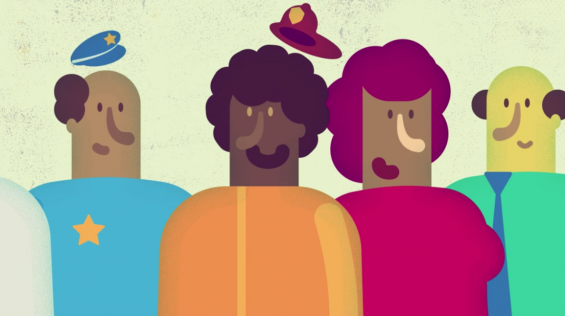
How to avoid miscommunication (in TED-Ed GIFs)

Have you ever talked with a friend about a problem, only to realize that they just don’t seem to grasp why the issue is so important to you? Have you ever presented an idea to a group, and it’s met with utter confusion? What’s going on here? Why does miscommunication occur so frequently, and how we can minimize frustration while expressing ourselves better? Below, Katherine Hampsten explains how to avoid miscommunication.

The fact is, human communication is incredibly complex. But the good news is that a basic understanding of what happens when we communicate can help us prevent miscommunication.

It’s possible to think of communication between people as a game of catch. As we communicate our message, we receive feedback from the other party. Through the transaction, we create meaning together.

But, as humans, we can’t help but send and receive messages through our own subjective lenses. When communicating, one person expresses her interpretation of a message, and the person she’s communicating with hears his own interpretation of that message. Our perceptual filters continually shift meanings and interpretations. In that case, maybe communication is more like a game of catch with a lump of clay. As each person touches the lump of clay, they shape it to fit their own unique perceptions based on any number of variables; like knowledge or past experience, age, race, gender, ethnicity, religion, or family background. So, as the lump of clay goes back and forth from one person to another; reworked, reshaped and always changing, it’s no wonder our messages sometimes turn into a mush of miscommunication.

Luckily, these 4 simple practices can help us all navigate our daily interactions for better communication:
1: Recognize that passive hearing and active listening are not the same. Engage actively with the verbal and nonverbal feedback of others, and adjust your message to facilitate greater understanding.
2: Listen with your eyes and ears, as well as with your gut. Remember that communication is more than just words.
3: Take time to understand as you try to be understood. In the rush to express ourselves, it’s easy to forget that communication is a two-way street. Be open to what the other person might say.
4: Be aware of your personal perceptual filters. Elements of your experience, including your culture, community, and family influence how you see the world. Say, “This is how I see the problem — but how do you see it?” Don’t assume that your perception is the objective truth; that’ll help you work toward sharing a dialog with others to reach a common understanding, together.
Watch the TED-Ed Lesson: How miscommunication happens (and how to avoid it):
To learn something new every week, sign up here for the TED-Ed Newsletter.




Technical people have this trouble a lot of the time but they have a simple means of avoiding it which has not been mentioned: to draw a diagram of show a picture as a visual means of providing an explanation.
Brilliantly illustrated!